All Aboard For The International Space Station!
All aboard for the International Space Station!
Before research can get on a rocket to head to space, it is carefully prepared at Kennedy Space Center.

Scientists sometimes spend days, or even weeks, doing all of the last-minute preparations to get their investigation ready for microgravity.

This week on NASA Explorers, we follow a team of researchers in the final days before their experiment gets loaded into a SpaceX Dragon capsule that will carry their research to the space station.

Watch episode 4 here!
Follow NASA Explorers on Facebook to catch new episodes of season 4 every Wednesday!
Make sure to follow us on Tumblr for your regular dose of space: http://nasa.tumblr.com
More Posts from Nasa and Others
Happy Martian New Year!

For any planet, a year is the time it takes to make one orbit around the sun. Because Mars is farther away from the sun, it has to travel a greater distance than Earth. It takes Mars about twice as long as it does for Earth to make one circle around the sun…therefore, a year on Mars lasts twice as long.

On May 5, Mars passes solar longitude 0 as the sun crosses the equator on Mars. This is the vernal equinox and was chosen by planetary scientists as the start of a new year.

Mars has four seasons, roughly twice as long as those on Earth, but with more variation given Mars’ eccentric orbit and the fact its orbital speed varies more as a result.

Did you know that there’s a U.S. city named Mars? Mars, PA hosts an annual Mars New Year celebration and we’re participating in this two-day science, technology, engineering and math (STEM) event to inspire young people to pursue innovation and exploration.

More info on Mars, PA: http://www.marsnewyear.com/
Get updated images from the events in Mars, PA here: https://www.flickr.com/photos/nasahqphoto/sets/72157683457751005/
Make sure to follow us on Tumblr for your regular dose of space: http://nasa.tumblr.com
We’re honored to be recognized as one of 2015’s new and notable Tumblrs! Thanks for following along as we explore the universe and discover our home planet.

New and Notable Tumblrs of 2015 - Part 1
We’d like to recognize these distinguished Tumblrs for achievement in Being So Good.
NASA
GISHWHES
Sheldon the Tiny Dinosaur
Afro Arts
Karlie Kloss
Actual Dog Vines
Nike Women
Magic: The Gathering
Post It Forward
Book Quotes
Good Things by Ellen
Just Bad Puns
How to Get Away with Paint
Google Sheep View
Ten Observations From Our Flying Telescope

SOFIA is a Boeing 747SP aircraft with a 100-inch telescope used to study the solar system and beyond by observing infrared light that can’t reach Earth’s surface.

What is infrared light? It’s light we cannot see with our eyes that is just beyond the red portion of visible light we see in a rainbow. It can be used to change your TV channels, which is how remote controls work, and it can tell us how hot things are.

Everything emits infrared radiation, even really cold objects like ice and newly forming stars! We use infrared light to study the life cycle of stars, the area around black holes, and to analyze the chemical fingerprints of complex molecules in space and in the atmospheres of other planets – including Pluto and Mars.

Above, is the highest-resolution image of the ring of dust and clouds around the back hole at the center of our Milky Way Galaxy. The bright Y-shaped feature is believed to be material falling from the ring into the black hole – which is located where the arms of the Y intersect.

The magnetic field in the galaxy M82 (pictured above) aligns with the dramatic flow of material driven by a burst of star formation. This is helping us learn how star formation shapes magnetic fields of an entire galaxy.

A nearby planetary system around the star Epsilon Eridani, the location of the fictional Babylon 5 space station, is similar to our own: it’s the closest known planetary system around a star like our sun and it also has an asteroid belt adjacent to the orbit of its largest, Jupiter-sized planet.

Observations of a supernova that exploded 10,000 years ago, that revealed it contains enough dust to make 7,000 Earth-sized planets!

Measurements of Pluto’s upper atmosphere, made just two weeks before our New Horizons spacecraft’s Pluto flyby. Combining these observations with those from the spacecraft are helping us understand the dwarf planet’s atmosphere.

A gluttonous star that has eaten the equivalent of 18 Jupiters in the last 80 years, which may change the theory of how stars and planets form.

Molecules like those in your burnt breakfast toast may offer clues to the building blocks of life. Scientists hypothesize that the growth of complex organic molecules like these is one of the steps leading to the emergence of life.

This map of carbon molecules in Orion’s Horsehead nebula (overlaid on an image of the nebula from the Palomar Sky Survey) is helping us understand how the earliest generations of stars formed. Our instruments on SOFIA use 14 detectors simultaneously, letting us make this map faster than ever before!
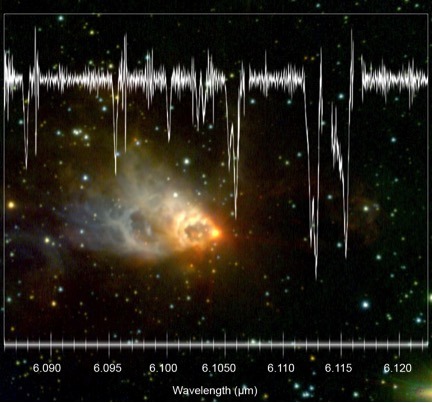
Pinpointing the location of water vapor in a newly forming star with groundbreaking precision. This is expanding our understanding of the distribution of water in the universe and its eventual incorporation into planets. The water vapor data from SOFIA is shown above laid over an image from the Gemini Observatory.

We captured the chemical fingerprints that revealed celestial clouds collapsing to form young stars like our sun. It’s very rare to directly observe this collapse in motion because it happens so quickly. One of the places where the collapse was observed is shown in this image from The Two Micron All Sky Survey.
Learn more by following SOFIA on Facebook, Twitter and Instagram.
Make sure to follow us on Tumblr for your regular dose of space: http://nasa.tumblr.com
Greatest Hits — Craters We Love
Our solar system was built on impacts — some big, some small — some fast, some slow. This week, in honor of a possible newly-discovered large crater here on Earth, here’s a quick run through of some of the more intriguing impacts across our solar system.
1. Mercury: A Basin Bigger Than Texas

Mercury does not have a thick atmosphere to protect it from space debris. The small planet is riddled with craters, but none as spectacular as the Caloris Basin. “Basin” is what geologists call craters larger than about 186 miles (300 kilometers) in diameter. Caloris is about 950 miles (1,525 kilometers) across and is ringed by mile-high mountains.
For scale, the state of Texas is 773 miles (1,244 kilometers) wide from east to west.
2. Venus: Tough on Space Rocks

Venus’ ultra-thick atmosphere finishes off most meteors before they reach the surface. The planet’s volcanic history has erased many of its craters, but like almost any place with solid ground in our solar system, there are still impact scars to be found. Most of what we know of Venus’ craters comes from radar images provided by orbiting spacecraft, such as NASA’s Magellan.
Mead Crater is the largest known impact site on Venus. It is about 170 miles (275 kilometers) in diameter. The relatively-flat, brighter inner floor of the crater indicates it was filled with impact melt and/or lava.
3. Earth: Still Craters After All These Years

Evidence of really big impacts — such as Arizona’s Meteor Crater — are harder to find on Earth. The impact history of our home world has largely been erased by weather and water or buried under lava, rock or ice. Nonetheless, we still find new giant craters occasionally.
A NASA glaciologist has discovered a possible impact crater buried under more than a mile of ice in northwest Greenland.
This follows the finding, announced in November 2018, of a 19-mile (31-kilometer) wide crater beneath Hiawatha Glacier – the first meteorite impact crater ever discovered under Earth’s ice sheets.
If the second crater, which has a width of over 22 miles (35 kilometers), is ultimately confirmed as the result of a meteorite impact, it will be the 22nd largest impact crater found on Earth.
4. Moon: Our Cratered Companion

Want to imagine what Earth might look like without its protective atmosphere, weather, water and other crater-erasing features? Look up at the Moon. The Moon’s pockmarked face offers what may be humanity’s most familiar view of impact craters.
One of the easiest to spot is Tycho, the tight circle and bright, radiating splat are easy slightly off center on the lower-left side of the full moon. Closer views of the 53-mile (85 kilometer)-wide crater from orbiting spacecraft reveal a beautiful central peak, topped with an intriguing boulder that would fill about half of a typical city block.
5. Mars: Still Taking Hits

Mars has just enough atmosphere to ensure nail-biting spacecraft landings, but not enough to prevent regular hits from falling space rocks. This dark splat on the Martian south pole is less than a year old, having formed between July and September 2018. The two-toned blast pattern tells a geologic story. The larger, lighter-colored blast pattern could be the result of scouring by winds from the impact shockwave on ice. The darker-colored inner blast pattern is because the impactor penetrated the thin ice layer, blasting the dark sand underneath in all directions.
6. Ceres: What Lies Beneath

The bright spots in Ceres’ Occator crater intrigued the world from the moment the approaching Dawn spacecraft first photographed it in 2015. Closer inspection from orbit revealed the spots to be the most visible example of hundreds of bright, salty deposits that decorate the dwarf planet like a smattering of diamonds. The science behind these bright spots is even more compelling: they are mainly sodium carbonate and ammonium chloride that somehow made their way to the surface in a slushy brine from within or below the crust. Thanks to Dawn, scientists have a better sense of how these reflective areas formed and changed over time — processes indicative of an active, evolving world.
7. Comet Tempel 1: We Did It!

Scientists have long known we can learn a lot from impact craters — so, in 2005, they made one themselves and watched it happen.
On July 4, 2005, NASA’s Deep Impact spacecraft trained its instruments on an 816-pound (370-kilogram) copper impactor as it smashed into comet Tempel 1.
One of the more surprising findings: The comet has a loose, “fluffy” structure, held together by gravity and contains a surprising amount of organic compounds that are part of the basic building blocks of life.
8. Mimas: May the 4th Be With You

Few Star Wars fans — us included — can resist Obi Wan Kenobi's memorable line “That’s no moon…” when images of Saturn’s moon Mimas pop up on a screen. Despite its Death Star-like appearance, Mimas is most definitely a moon. Our Cassini spacecraft checked, a lot — and the superlaser-looking depression is simply an 81-mile (130-kilometer) wide crater named for the moon’s discoverer, William Herschel.
9. Europa: Say What?

The Welsh name of this crater on Jupiter’s ocean moon Europa looks like a tongue-twister, but it is easiest pronounced as “pool.” Pwyll is thought to be one of the youngest features we know of on Europa. The bright splat from the impact extends more than 600 miles (about 1,000 kilometers) around the crater, a fresh blanket over rugged, older terrain. “Fresh,” or young, is a relative term in geology; the crater and its rays are likely millions of years old.
10. Show Us Your Greatest Hits

Got a passion for Stickney, the dominant bowl-shaped crater on one end of Mars’ moon Phobos? Or a fondness for the sponge-like abundance of impacts on Saturn’s battered moon Hyperion (pictured)? There are countless craters to choose from. Share your favorites with us on Twitter, Instagram and Facebook.
Make sure to follow us on Tumblr for your regular dose of space: http://nasa.tumblr.com

“I felt I was an accepted team member. It was a great experience and a unique opportunity.”
Ruth Ann Strunk, a math major, was hired in 1968 at NASA’s Kennedy Space Center as an acceptance checkout equipment software engineer. She monitored the work of contractors who wrote the computer programs designed to check out the command module, lunar module and the Apollo J mission experiments. These experiments were conducted aboard the service modules on Apollo 15, 16 and 17 by the command module pilots.
“I am proud of the advancement and the number of women who are working and enjoy working here,” Strunk said. “It was a wonderful opportunity NASA afforded me during Apollo that I have been able to use ever since.”
Remember the women who made #Apollo50th possible.
Follow Women@NASA for more stories like this one, and make sure to follow us on Tumblr for your regular dose of space: http://nasa.tumblr.com.
Celebrating 10 Years of Revolutionary Solar Views
Twin spacecraft give humanity unprecedented views of the entire sun at one time, traveling to the far side of our home star over the course of a 10-year mission.

These two spacecraft are called STEREO, short for Solar and Terrestrial Relations Observatory. Launched on Oct. 25, 2006, and originally slated for a two-year mission, both spacecraft sent back data for nearly eight years, and STEREO-A still sends information and images from its point of view on the far side of the sun.

STEREO watches the sun from two completely new perspectives. It also provides information invaluable for understanding the sun and its impact on Earth, other worlds, and space itself – collectively known as space weather. On Earth, space weather can trigger things like the aurora and, in extreme cases, put a strain on power systems or damage high-flying satellites.
Because the rest of our sun-watching satellites orbit near our home planet, STEREO’s twin perspectives far from Earth give us a unique opportunity to look at solar events from all sides and understand them in three dimensions.

We use data from STEREO and other missions to understand the space environment throughout the solar system. This helps operators for missions in deep space prepare for the sudden bursts of particles and magnetic field that could pose a danger to their spacecraft.

STEREO has also helped us understand other objects in our solar system – like comets. Watching how a comet’s tail moves gives us clues about the constant stream of particles that flows out from the sun, called the solar wind.

STEREO is an essential piece of our heliophysics fleet, which includes 17 other missions. Together, these spacecraft shed new light on the sun and its interaction with space, Earth, and other worlds throughout the solar system.
To celebrate, we’re hosting a Facebook Live event on Wednesday, Oct. 26. Join us at noon ET on the NASA Sun Science Facebook page to learn more about STEREO and ask questions.
Learn more about how NASA studies the sun at: www.nasa.gov/stereo
Follow us on Tumblr for your regular dose of space: http://nasa.tumblr.com
7 Sports Astronauts Love Without Gravity (Including Football)
Astronauts onboard the International Space Station spend most of their time doing science, exercising and maintaining the station. But they still have time to shoot hoops and toss around a football.
From chess to soccer, there’s a zero-gravity spin to everything.
1. Baseball



Baseball: America’s favorite pastime. JAXA astronaut, Satoshi Furukawa shows us how microgravity makes it possible to be a one-man team. It would be a lot harder to hit home runs if the players could jump that high to catch the ball.
2. Chess
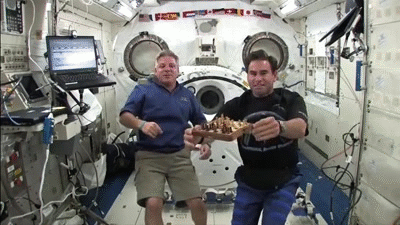
Yes, it’s a sport, and one time NASA astronaut Greg Chamitoff (right) played Earth on a Velcro chess board. An elementary school chess team would pick moves that everyone could vote for online. The winning move would be Earth’s play, and then Chamitoff would respond. About every two days, a move would be made. But who won the historic Earth vs. Space match? Earth! Chamitoff resigned after Earth turned its pawn into a queen, but it was game well played.
3. Soccer

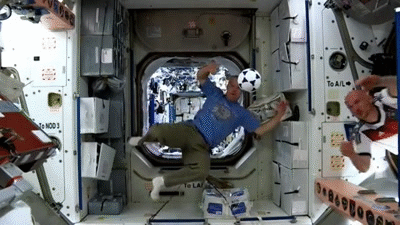
NASA astronaut Steve Swanson put a new spin on soccer by juggling the ball upside down. However, he might not have considered himself upside down. On the space station, up and down are relative.
4. Gymnastics
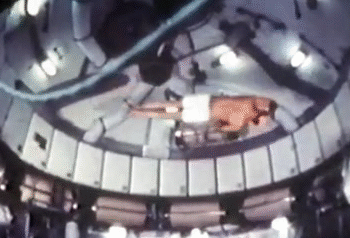
NASA astronauts usually sign off their videos with a zero-gravity somersault (either forwards or backwards). But astronauts are also proficient in handstands, flips and twists. The predecessor to the International Space Station, the Skylab, had the best space for the moves. The current space station is a bit tight in comparison.
5. Basketball

Objects that aren’t heavy don’t move very well on the space station. They kind of just float. It’s like Earth, but exaggerated. For example, on Earth a beach ball wouldn’t go as far as a basketball. The same is true in space, which is why playing with a basketball in space is more fun than playing with a beach ball.
6. Golf

People talk about hitting golf balls off skyscrapers, but what about off the International Space Station? While golf isn’t a normal occurrence on the station, it’s been there. One golf company even sent an experiment to the station to find out how to make better golf clubs.
7. Football

Zero gravity doesn’t make everything easier. Astronauts need to relearn how to throw things because their brains need to relearn how to interpret sensory information. A bowling ball on the space station no longer feels as heavy as a bowling ball on Earth. When astronauts first throw things on the space station, everything keeps going too high. That would put a wrench in your spiral for a couple of months. But once you adjust, the perfect spiral will just keep spiraling!
Make sure to follow us on Tumblr for your regular dose of space: http://nasa.tumblr.com
Houston, We Have a Launch!
Today, three new crew members will launch to the International Space Station. NASA astronaut Jeff Williams, along with Russian cosmonauts Alexey Ovchinin and Oleg Skripochka, are scheduled to launch from the Baikonur Cosmodrome in Kazakhstan at 5:26 p.m. EDT. The three Expedition 47 crew members will travel in a Soyuz spacecraft, rendezvousing with the space station six hours after launch.

Traveling to the International Space Station is an exciting moment for any astronaut. But what if you we’re launching to orbit AND knew that you were going to break some awesome records while you were up there? This is exactly what’s happening for astronaut Jeff Williams.
This is a significant mission for Williams, as he will become the new American record holder for cumulative days in space (with 534) during his six months on orbit. The current record holder is astronaut Scott Kelly, who just wrapped up his one-year mission on March 1.
On June 4, Williams will take command of the station for Expedition 48. This will mark his third space station expedition…which is yet another record!
Want to Watch the Launch?

You can! Live coverage will begin at 4:30 p.m. EDT on NASA Television, with launch at 5:26 p.m.
Tune in again at 10:30 p.m. to watch as the Soyuz spacecraft docks to the space station’s Poisk module at 11:12 p.m.
Hatch opening coverage will begin at 12:30 a.m., with the crew being greeted around 12:55 a.m.
NASA Television: https://www.nasa.gov/nasatv
Follow Williams on Social!

Astronaut Jeff Williams will be documenting his time on orbit, and you can follow along on Facebook, Instagram and Twitter.
Make sure to follow us on Tumblr for your regular dose of space: http://nasa.tumblr.com

Andre Douglas
A Virginia native, Andre Douglas served in the U.S. Coast Guard as a naval architect and salvage engineer. Douglas later worked as an engineer for Johns Hopkins University Applied Physics Laboratory on NASA's DART mission to redirect an asteroid. https://go.nasa.gov/48FBlam
Make sure to follow us on Tumblr for your regular dose of space!
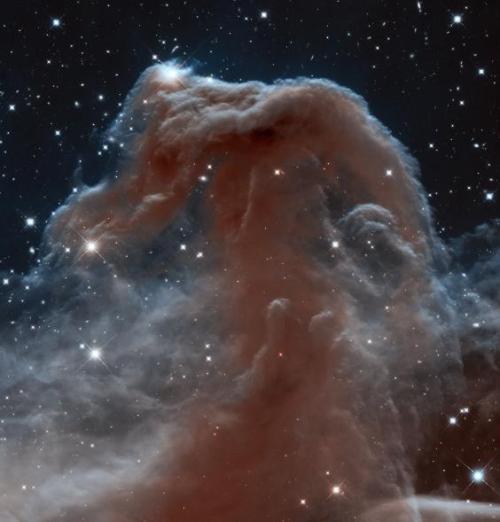
Known as the Horsehead Nebula – but you can call it Starbiscuit.
Found by our Hubble Space Telescope, this beauty is part of a much larger complex in the constellation Orion.
Make sure to follow us on Tumblr for your regular dose of space: http://nasa.tumblr.com.
-
 mona-vainy liked this · 2 years ago
mona-vainy liked this · 2 years ago -
 innerfa18eww2tarawadean liked this · 5 years ago
innerfa18eww2tarawadean liked this · 5 years ago -
 poopoopsuperman liked this · 5 years ago
poopoopsuperman liked this · 5 years ago -
 lord-starquaad reblogged this · 5 years ago
lord-starquaad reblogged this · 5 years ago -
 lightspica liked this · 5 years ago
lightspica liked this · 5 years ago -
 more-punk-pebble liked this · 5 years ago
more-punk-pebble liked this · 5 years ago -
 devin924 liked this · 5 years ago
devin924 liked this · 5 years ago -
 tir3dace liked this · 5 years ago
tir3dace liked this · 5 years ago -
 razztazticffn reblogged this · 5 years ago
razztazticffn reblogged this · 5 years ago -
 pictoralpoetry liked this · 5 years ago
pictoralpoetry liked this · 5 years ago -
 unsound-wav liked this · 5 years ago
unsound-wav liked this · 5 years ago -
 we-are-made-of-dead-stars liked this · 5 years ago
we-are-made-of-dead-stars liked this · 5 years ago -
 saudadestuas reblogged this · 5 years ago
saudadestuas reblogged this · 5 years ago -
 saudadestuas liked this · 5 years ago
saudadestuas liked this · 5 years ago -
 r1m72 liked this · 5 years ago
r1m72 liked this · 5 years ago -
 tracksuitmafia-bro liked this · 5 years ago
tracksuitmafia-bro liked this · 5 years ago -
 skcirthinq reblogged this · 5 years ago
skcirthinq reblogged this · 5 years ago -
 moving-read-bio liked this · 5 years ago
moving-read-bio liked this · 5 years ago -
 devlintech15 liked this · 5 years ago
devlintech15 liked this · 5 years ago -
 den1990 reblogged this · 5 years ago
den1990 reblogged this · 5 years ago -
 whatevenisthiscrapp liked this · 5 years ago
whatevenisthiscrapp liked this · 5 years ago -
 psyxe liked this · 5 years ago
psyxe liked this · 5 years ago -
 thoughtfulauthorpandaoperator liked this · 5 years ago
thoughtfulauthorpandaoperator liked this · 5 years ago -
 sparklemiranda liked this · 5 years ago
sparklemiranda liked this · 5 years ago -
 chickenscratch42 liked this · 5 years ago
chickenscratch42 liked this · 5 years ago -
 immano liked this · 5 years ago
immano liked this · 5 years ago -
 paintsheep liked this · 5 years ago
paintsheep liked this · 5 years ago -
 delightfulpaperpost liked this · 5 years ago
delightfulpaperpost liked this · 5 years ago -
 feisty-yoga-pants liked this · 5 years ago
feisty-yoga-pants liked this · 5 years ago -
 bibliofran liked this · 5 years ago
bibliofran liked this · 5 years ago -
 the-cerulean-seal reblogged this · 5 years ago
the-cerulean-seal reblogged this · 5 years ago -
 adt-space reblogged this · 5 years ago
adt-space reblogged this · 5 years ago -
 mannuwu liked this · 5 years ago
mannuwu liked this · 5 years ago -
 suzukihara reblogged this · 5 years ago
suzukihara reblogged this · 5 years ago -
 suzukihara liked this · 5 years ago
suzukihara liked this · 5 years ago -
 oakkingscrolls reblogged this · 5 years ago
oakkingscrolls reblogged this · 5 years ago
Explore the universe and discover our home planet with the official NASA Tumblr account
1K posts